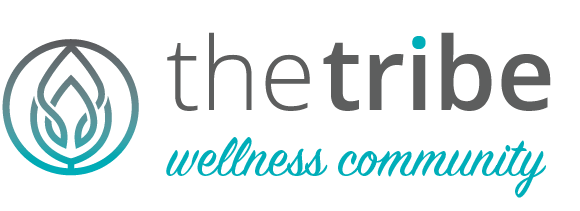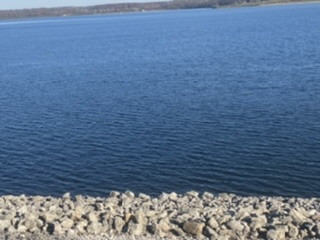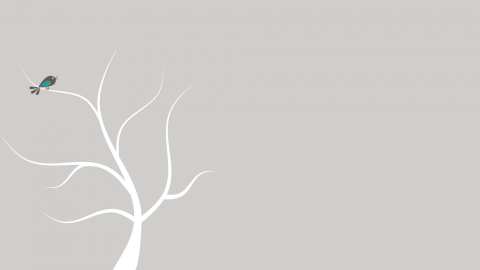Author: Penny Locaso
“Summary. Most of us believe that if we tick a series of boxes (great job, fancy car, etc.,) we will arrive at success and live happily every after.
Most of us are led to believe that happiness is a final destination — one that can be reached if we make the right choices, learn from our mistakes, and keep pushing forward. We are taught that, once we finally find it, we’ll be forever satisfied in our lives, and so we live feeling overwhelmed and inadequate, chasing this dream, never stopping to question if it is, in fact, flawed.
The reality is that it is flawed. “Happiness” is not a destination. It’s a state of mind, and you don’t need to be in it every moment of every day. Not only is that impossible, but it’s also unhealthy. Life is complex and uncertain. Ups and downs are normal. The day you land that promotion you’ve been longing for might also be the day you suffer your first heartbreak. How do you experience happiness if you don’t know sadness and pain?
It took me 39 years to understand this. Up until that point, I had believed that if I ticked a series of boxes (flashy career, two-story home, fast car, international travel) I would reach “success” and live my days out happy. But once I arrived at that place, I still felt unfulfilled. I realized the way I had defined success was based on someone else’s definition. What was I missing? The things that made me truly happy — human connection, positively impacting the lives of others, and being present — had been sidelined by my pursuit of success.
So, I decided to disrupt the status quo. I left my job as an executive at a global company, relocated my family from Perth to Melbourne, bid adieu to an 18-year relationship, and started HackingHappy.co, a purpose-led company with the sole intent of helping others live happier lives. My goal in starting this company was to redefine what it means to be happy by giving myself and others the skills and language to relate to “happiness” in a more realistic and healthier way.
I set myself a bold mission — that by 2025, I would teach 10 million humans how to find their happiness.
But to do that, I needed data and insights. I spent three years conducting a series of experiments. I interviewed more than 100 people between the age of 22 and 70 from various walks of life. I ran workshops with thousands in Australia, New Zealand, and the Unites States to explore and unpack what holds us back from living lives we actually feel fulfilled by, as opposed to those we consider “fulfilling” by definition.
Through these experiments, I noticed a few consistent themes. Many of the people I interacted with carried a fear of failure, financial instability, and judgement from others and themselves around not being good enough. The three greatest barriers to leading a fulfilled and happy life seemed to be distraction, fear, and a lack of curiosity about oneself, others, and the world in general.
Through listening to people’s stories, I also found that those who allowed themselves to fully process so-called “negative” emotions, along with the more positive ones, led happier lives. As they processed those negative emotions, it helped them uncover what truly mattered to them. Some psychologists refer to this as emodiversity — the ability to experience a diverse range of emotions in equal measure.
The people who felt the most fulfilled were the ones who had learned to let go of the need to feel happy all the time and had not only accepted the ups and downs that come with being alive but had also come to appreciate them. This mindset and behavioral shift helped them lean into uncertainty, embrace emotions (both positive and negative), and adapt to their environment with intention and meaning.
Take the example of my mother. At the age of 60, she lost her entire life savings after investing them in her brother’s business. It was devastating. The news came shortly after she learned of his unexpected suicide. This didn’t pull her down: In her grief, she chose gratitude and made an intentional choice to continue living a full life not only for herself and for her mental wellbeing, but for others who relied on her. She made a conscious decision to move on from her career as a farmer to that of a yoga teacher, helping other people find their inner peace.
There is also Sheree, a young corporate lawyer, who, with no experience in entrepreneurship, walked away from her job and ended up starting the largest co-working space for female-led entrepreneurs in Australia. Now she helps women build the skills to raise capital and build businesses.
People who intentionally adapt unlock doors to possibility and potential. This was a light-bulb moment for me. I began to understand that, while you may not have control over every aspect of your environment, you do have control over yourself and the choices you make, including those that affect your mental and emotional health.
Based on my observations, I came up with this more fitting definition of happiness:
“Happiness is being able to ride the wave of every emotion that life throws at you, knowing that you can come out the other side just a little better than what you were before because you have the skills (focus, courage, curiosity), the resources (a positive mindset), and the support structure (a community) to make that happen.”
The more I stared at this definition, the more innately curious I became about this idea of adaptability and the role it plays in reaching a state of fulfillment. That’s when I set off on my next adventure: building a methodology to hack happiness.
During the course of my research, I observed that we are best at adapting when change is imposed by external forces within our environment. Take the example of how we have adapted to living with Covid and lockdowns. We’ve adapted because we’ve been forced to. That’s a great skill for surviving but it’s not ideal for thriving. You thrive through self-motivated, pro-active adaptation, the kind my mother and Sheree experienced. It’s not a mindset of “just getting by” but one of intentionality.
While intentional adaptability takes time and practice to get the hang of, through my work, I’ve identified three primary skills that can help you get started.
Focus
You may have heard: We live in a world that is designed to distract us. Our attention has become a highly valuable commodity, so valuable that companies like Netflixclaim sleep as one of their biggest competitors. Productivity has become a disease, and “busy” has become our default.
How many times have you received an email urging you to use your downtime to learn a new language or try a new hobby? In the pressure to be productive, we’re filling every waking moment with something to do, whether it’s finding an activity to keep us busy or spending time on our devices.
Our focus on constantly doing things, however, can also be avoidance. Distractions keep us from finding the mind space to sit with both good and bad feelings, including boredom and sadness. Cultivating focus is about learning how to step away from the constant white noise of busyness. It’s about creating the space to be, to think clearly, and to determine what truly matters to us so that we can include more of those things in our lives.
How to Build Focus
Try removing the word “busy” from your vocabulary for just one week and observe how it impacts your mindset, your behavior, and the connection you have with others. I did this two years ago and it changed my life. When I was asked how I was, instead of saying, “I’m so busy,” I would say, “I’m positively engaged doing XYZ.”
Letting go of the word busy is the first step toward owning your actions and explaining them with intentionality. Instead of telling others and yourself, “I’m overwhelmed with tasks and distractions,” you’re shifting your mindset to, “I’m choosing to invest my time and productivity into these three things.”
This can help us feel less overwhelmed about our to-do list (“I have too much to do!”) and more in control of our time (“I’m doing things that truly matter.”). Equally it stops us from hiding behind a word that reveals no useful information to others, and more often than not, is code for something else: anxiety, loneliness, our need for self-validation or FOMO (fear of missing out).
Courage
Curiosity and focus alone aren’t enough. During my research, fear came up as the biggest barrier to change. Yet fear (along with failure) is one of the greatest levers you have available to enable your happiness. Building courage is centered around letting go of the conditioned belief that fear should be used as an alarm bell to run away rather than lean into possibility. Courage helps you step into fear knowing it is a universal, biological human emotion, and one that you can embrace and use to shape the change you’re trying to make. Leaning into fear (that is non-life threatening) enables us to creatively process and remove barriers that stand between wanting something and acting on it.
Through my workshops in large corporations, I discovered that when we normalize fear and failure by sharing it openly with our peers, we realize that many of our fears are shared and that we are not alone. This, in turn, makes us feel better about ourselves and enables us to move through fear and failure in a way that is innovative, creative, and focused on growth, rather than limitation.
How to Build Courage
A great way to do this is by practicing micro bravery. Micro bravery is essentially building courage by doing small things each day that push you out of your comfort zone. It can be as simple as being the first to speak up during a meeting, trying a new cuisine, signing up for an online class, or having a vulnerable conversation with a friend. Over time, these small acts of bravery help us takes leaps that may be holding us back. We learn that fear is never as bad or as big as we can make it in our heads. More often than not, unexpected joy is found on the other side.
Curiosity
Part of being adaptable is accepting what you can’t change but acknowledging what you can. Curiosity is a huge part of that. If you never question yourself, others, or the world around you, you will never see the possibilities, paths, or opinions that lie beyond what is most immediately available to you. Curiosity requires us to be fully present, to listen more than we speak, to ask more questions, be observant of new ideas, and embrace the unfamiliar. Most importantly, it challenges our ingrained beliefs.
When we are curious (“What would happen if I take that job offer in London?”), it helps us imagine a future that is different from what is easy or obvious. When we ask questions (“Why can’t I move somewhere new? Why can’t I make a change?”), we begin to identify the behaviors or fears that are holding us back from trying something new. And that is the first step to learning how to adapt, and change, in a way that is intentional.
How to Build Curiosity
Create a list of all the things you are curious about but have little to no knowledge of — and don’t limit them to work-related topics. Your list could include, “How will Artificial Intelligence impact my job?” but it could also include, “Why does a wine glass have a stem?” or even, “How do I start writing a book or start a podcast?”
Once you’ve put down all your ideas, go over your list and highlight the one that lights you up the most. Now, dedicate a small amount of time each day to learning more about it. I gift myself 15 minutes of learning each morning before I do any work at all. Those 15 minutes add up to an extra 65 hours of knowledge-building a year.
What happens when you master these skills? Quite a lot. Through my research, I found that when people build their ability to intentionally adapt, they:
- Get better at taking control of their time because they know that it is their most precious and valuable resource.
- Become less afraid of saying “no,” and say it often.
- Use fear as a green light to ride the edge of their comfort zone, because they know that growth occurs in discomfort.
- Surround themselves with “unlike minds”— people who challenge them to look at the world through a different lens.
- Become more comfortable sitting with quiet and stillness, because they know it’s where the brain does its most powerful work.
- Trust the discomfort of not accepting the first answer that presents itself.
- Make the time to cultivate deep human connections because they know opportunity and possibility lie at the other end.
Happiness should not be your goal, nor an end state, but a way of being. It may sound like a tough ask in a world of uncertainty. But when you change your understanding of what it means to be happy, you may notice that you start to feel it much more.”




